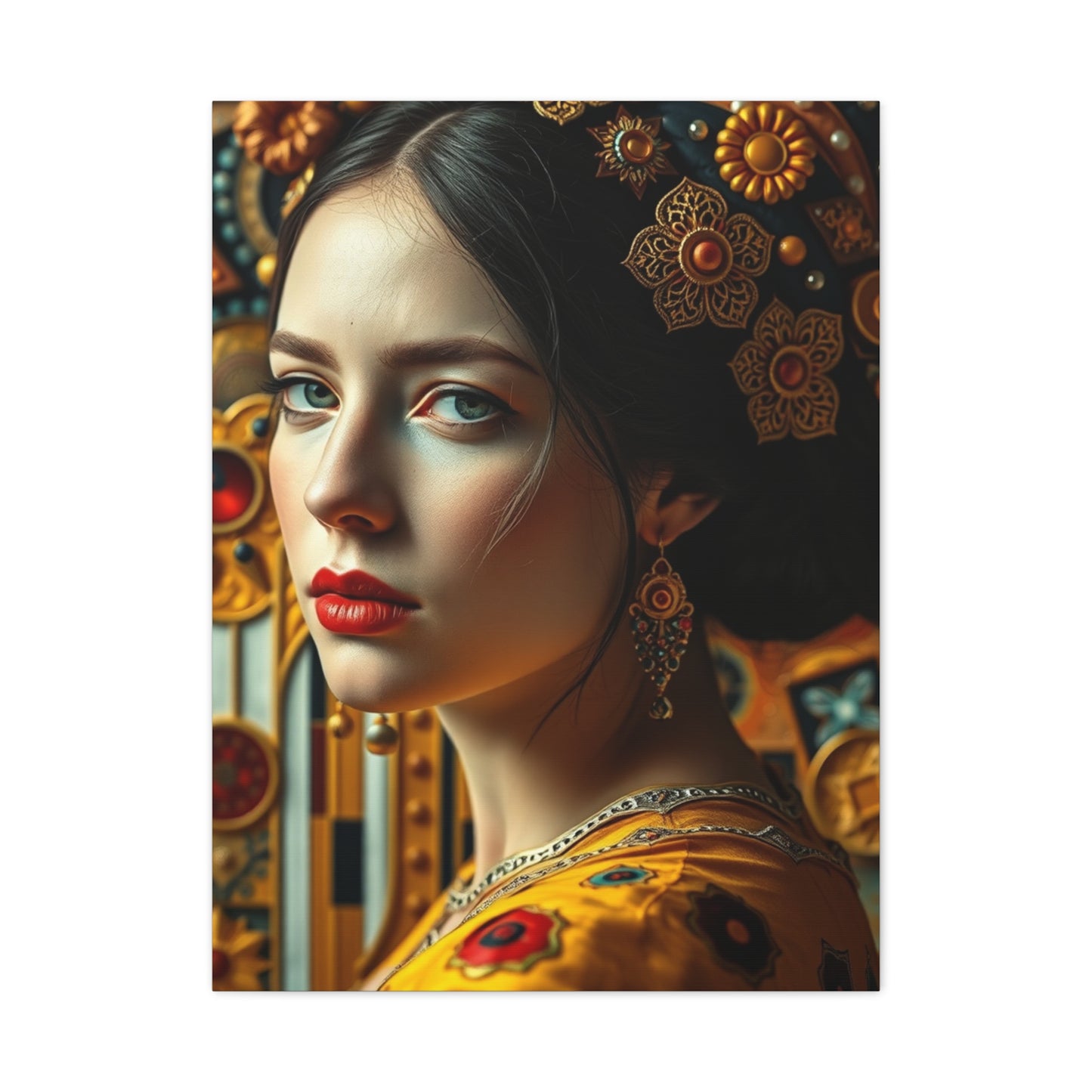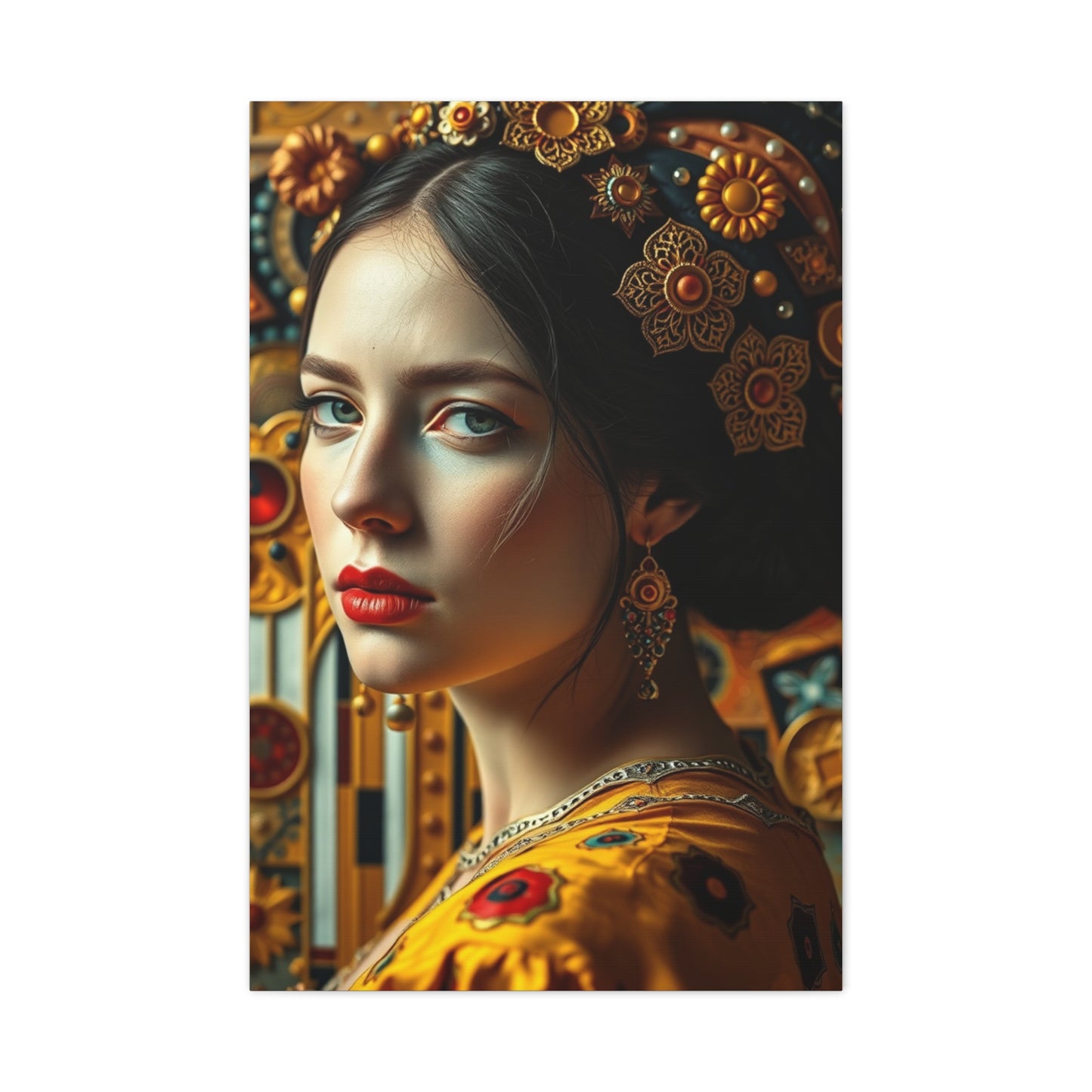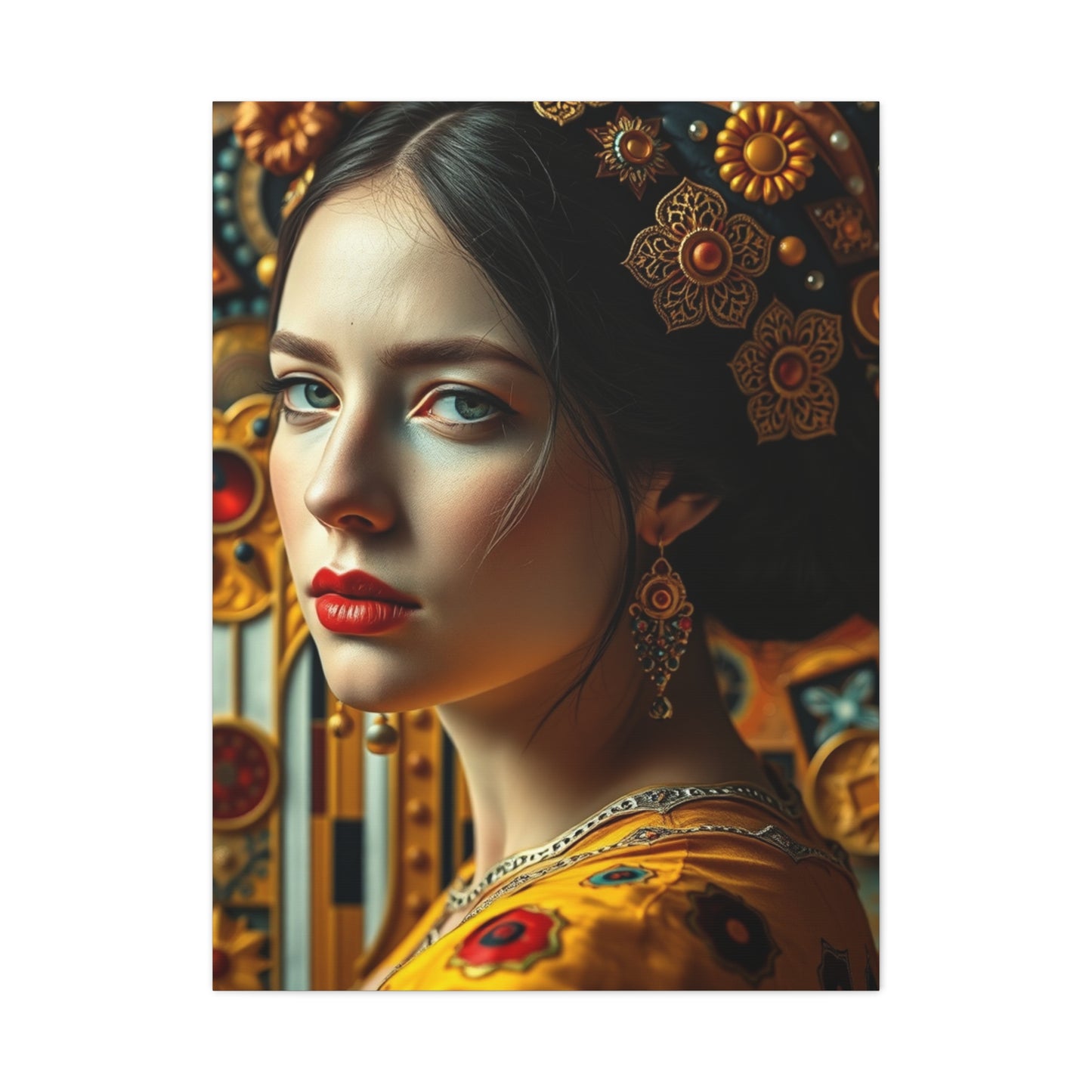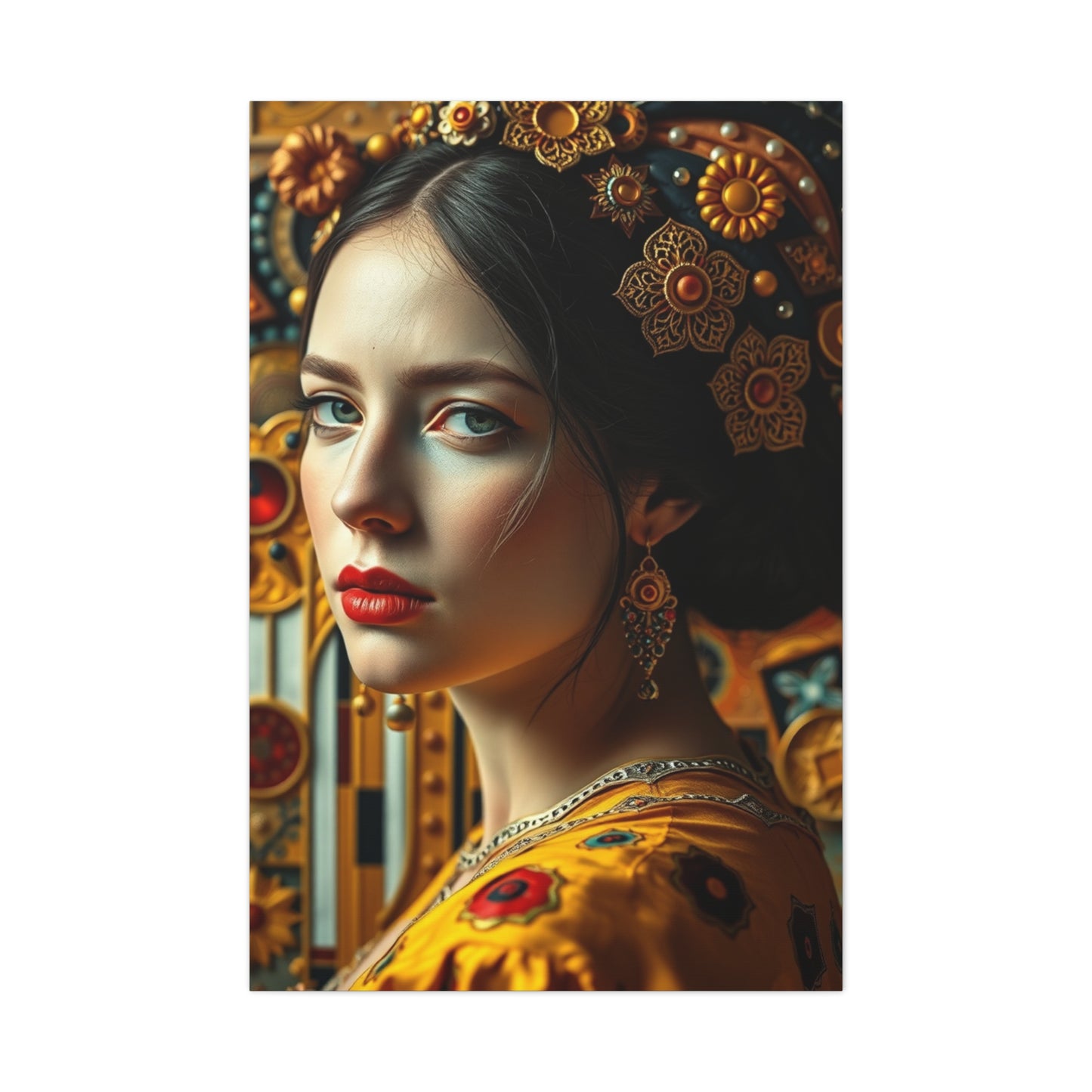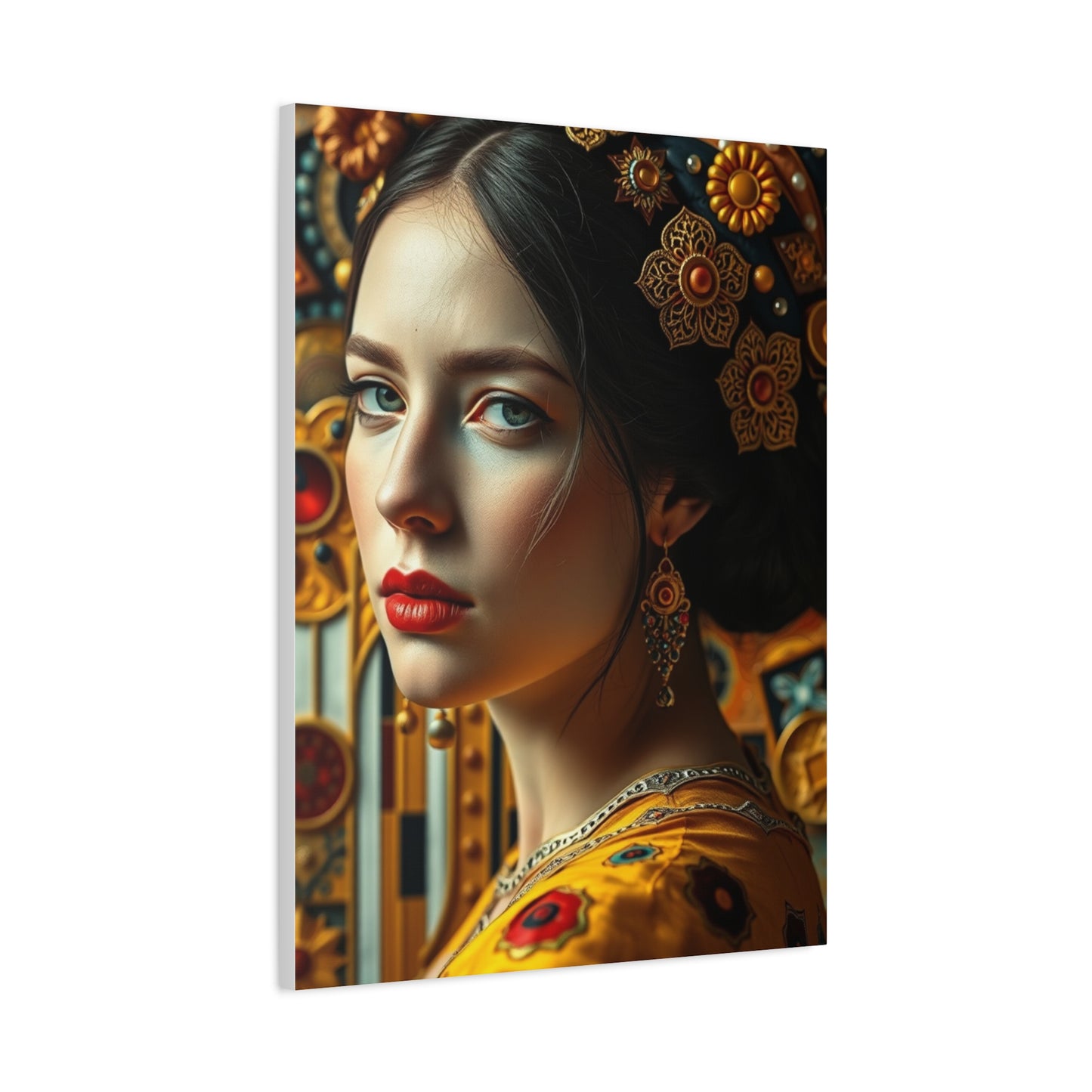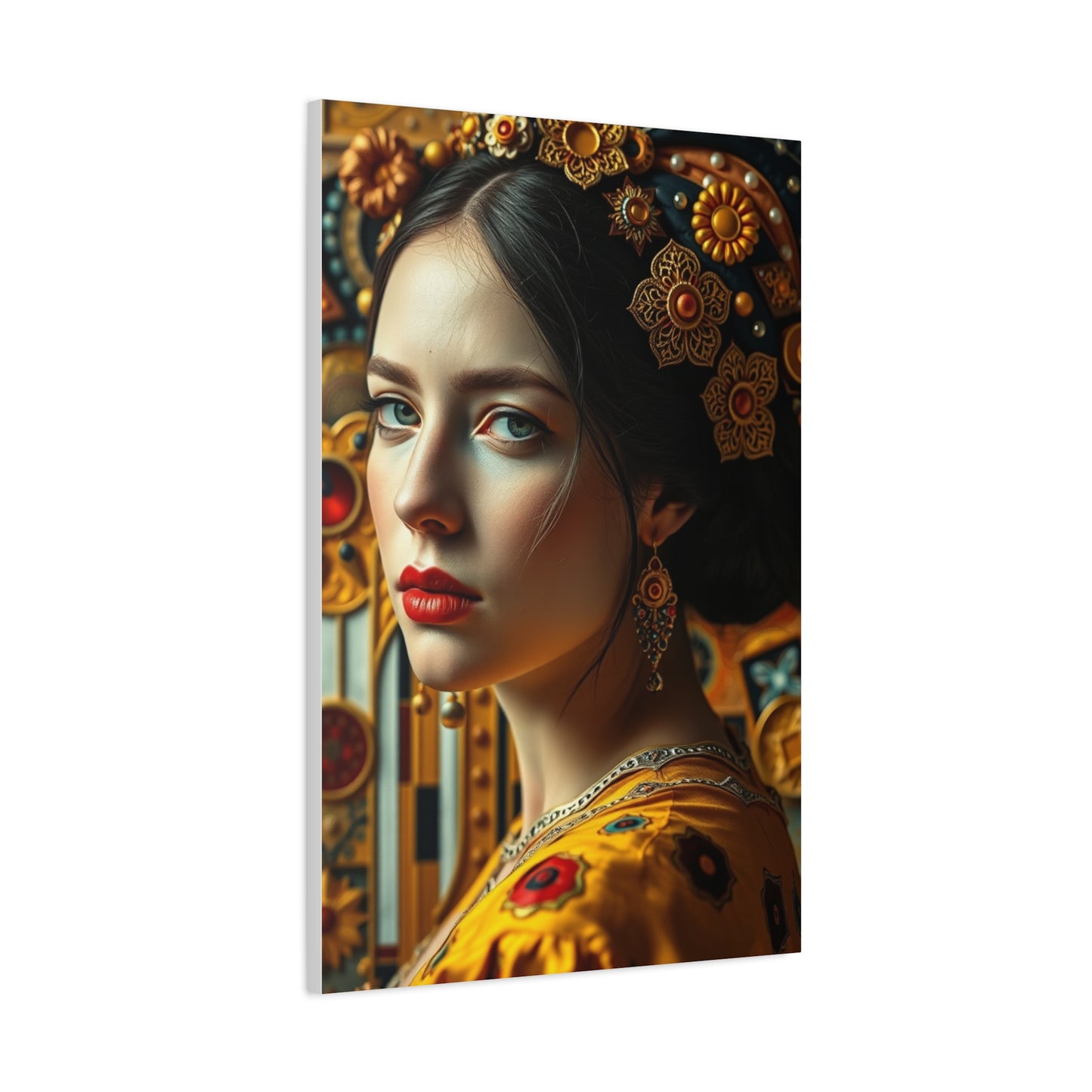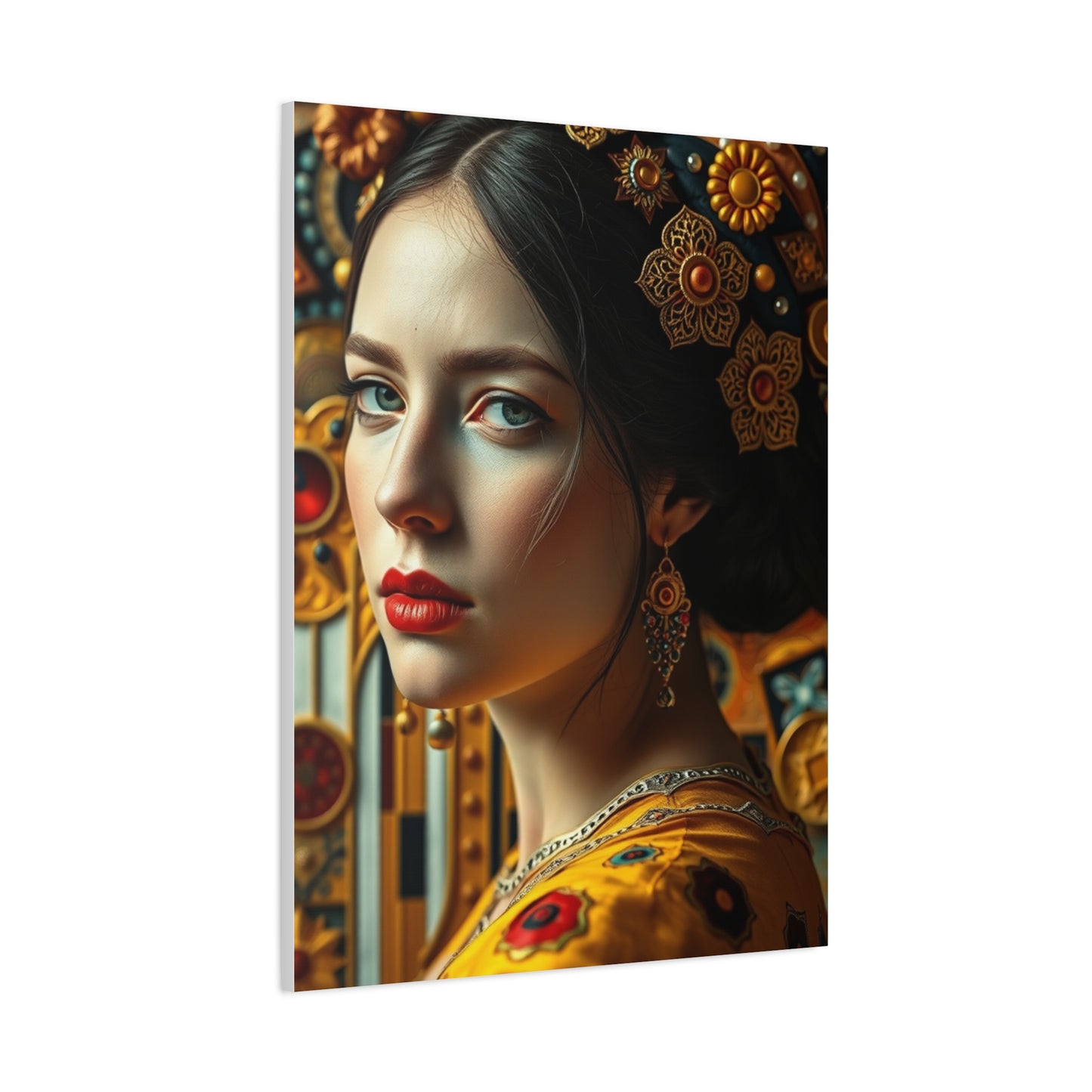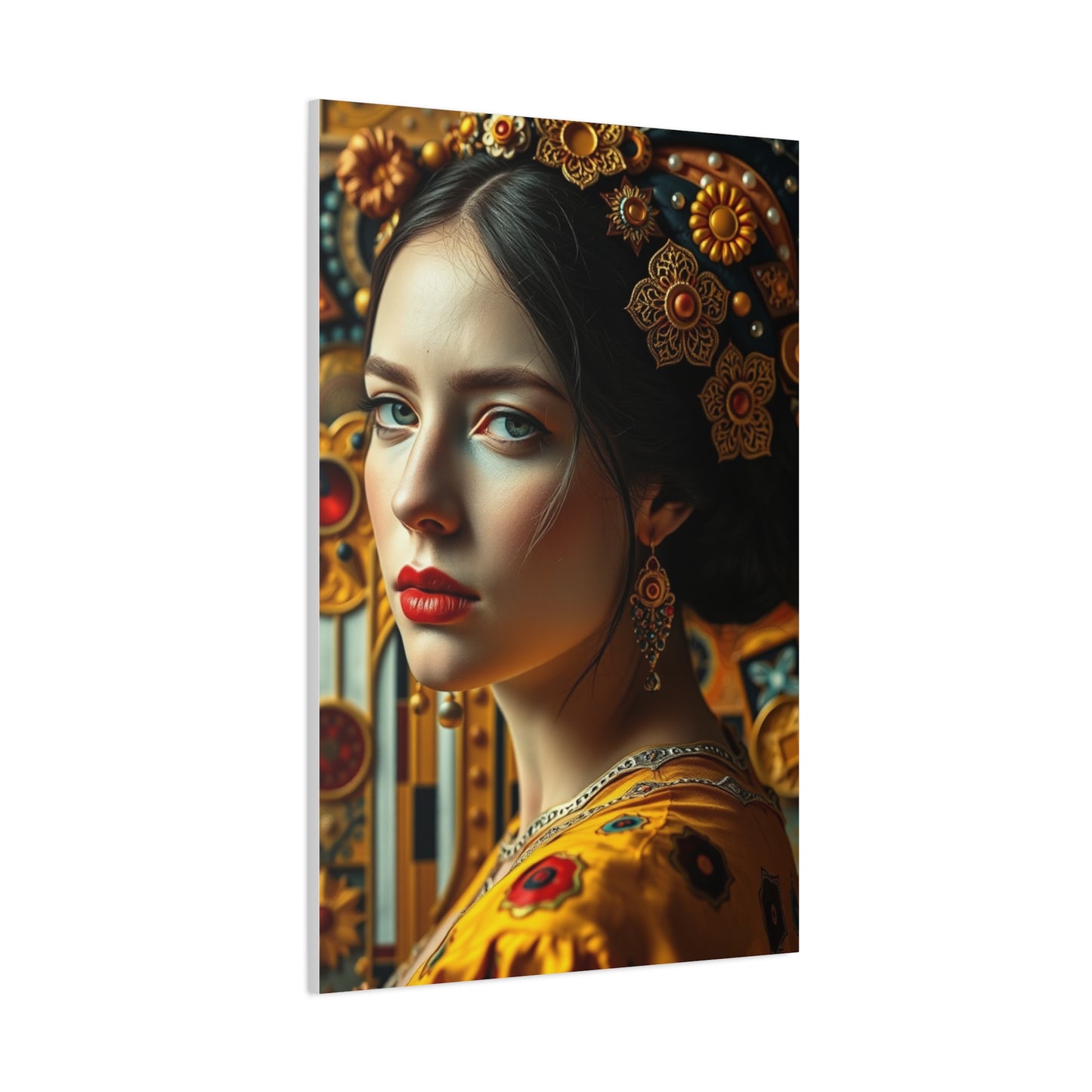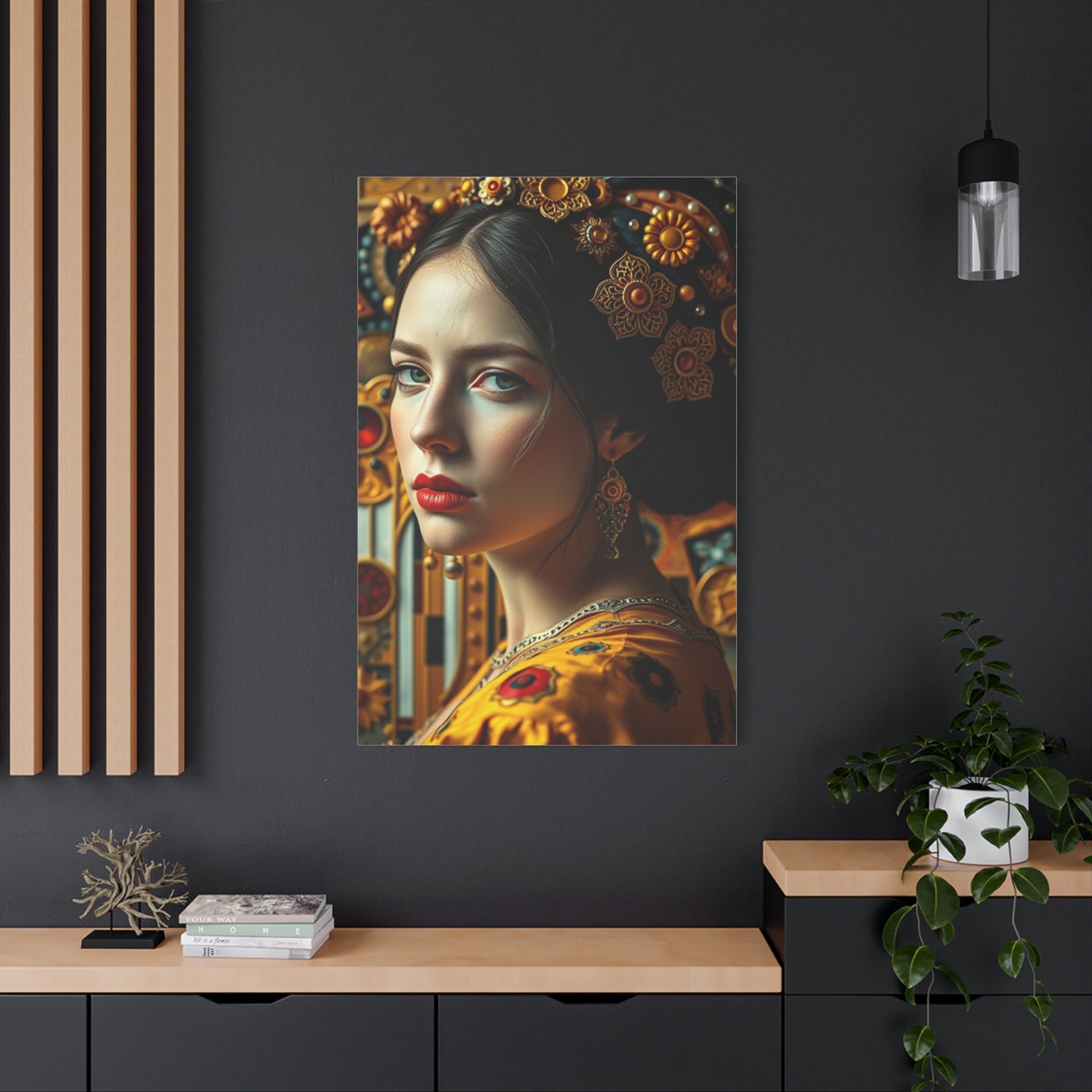Ethereal Gold Tapestry: Discovering the Mystical Artistry and Timeless Beauty of Golden Woven Masterpieces
The world of ethereal gold tapestry represents one of humanity's most captivating artistic achievements, blending ancient craftsmanship with celestial beauty. These magnificent textile creations have adorned the walls of palaces, temples, and sacred spaces throughout history, capturing the imagination of viewers with their shimmering golden threads and intricate designs. The term ethereal perfectly describes these works, as they seem to float between the earthly and divine realms, their golden surfaces catching light in ways that create an almost supernatural glow. This remarkable art form combines technical mastery with aesthetic vision, resulting in pieces that transcend mere decoration to become objects of profound cultural and spiritual significance.
Origins and Ancient Beginnings of Golden Textile Artistry
The creation of ethereal gold tapestry finds its roots in ancient civilizations that recognized both the practical and symbolic value of incorporating precious metals into woven fabrics. Archaeological evidence suggests that the practice of weaving gold threads into textiles dates back over three thousand years, with some of the earliest examples discovered in burial sites across Asia, the Middle East, and Mediterranean regions. These ancient artisans developed sophisticated techniques for transforming solid gold into fine threads that could be woven alongside silk, wool, and linen fibers.
Early civilizations viewed gold as a sacred material connected to the sun, divine power, and immortality. The Egyptians were among the first to master the art of creating gold-threaded textiles, using them primarily for wrapping mummies and decorating temples. Their methods involved beating gold into extremely thin sheets, then cutting these sheets into narrow strips that could be wrapped around core threads of linen or silk. The resulting material possessed both flexibility and durability, making it suitable for weaving into complex patterns.
In ancient Mesopotamia, similar techniques emerged independently, with royal courts commissioning elaborate gold tapestries to demonstrate wealth and divine favor. The Babylonians and Assyrians developed their own distinctive styles, often incorporating mythological scenes and protective symbols into their designs. These pieces served not only decorative purposes but also functioned as portable displays of power that could be transported during royal processions or military campaigns.
The Persians elevated gold tapestry to new heights, creating pieces of extraordinary complexity and beauty. Persian weavers developed specialized looms that allowed for greater detail and precision, enabling them to produce tapestries that depicted elaborate hunting scenes, garden paradises, and celestial maps. The ethereal quality of these Persian creations came from their masterful use of color gradations and their ability to make gold threads interact with other materials to create depth and luminosity.
Chinese artisans contributed significantly to the development of gold tapestry techniques, particularly during the Han Dynasty. They pioneered methods for creating gold-wrapped threads that were more flexible and easier to weave than earlier versions. Chinese gold tapestries often featured dragons, phoenixes, and other auspicious symbols, with each element carefully planned to convey specific meanings related to prosperity, longevity, and cosmic harmony.
Medieval European Excellence in Golden Weaving Traditions
The medieval period witnessed an extraordinary flowering of ethereal gold tapestry production across Europe, particularly in regions that had access to both skilled weavers and sources of gold thread. European workshops developed their own distinctive approaches, influenced by both Byzantine traditions and Islamic artistic principles that had filtered through trade routes and cultural exchanges. The tapestries produced during this era represented the pinnacle of textile artistry, combining religious devotion with technical innovation.
Flemish weavers gained particular renown for their ability to create tapestries of unprecedented quality and complexity. Cities like Brussels, Bruges, and Arras became centers of tapestry production, attracting commissions from royal courts, wealthy merchants, and religious institutions throughout Europe. The ethereal quality of Flemish gold tapestries came from their use of extraordinarily fine threads and their mastery of perspective and shading techniques that created illusions of depth and three-dimensionality.
French workshops developed their own celebrated traditions, with Paris and later the Gobelins manufactory producing pieces that became synonymous with luxury and refinement. French gold tapestries often depicted elaborate allegorical scenes, mythological narratives, and courtly life, all rendered with meticulous attention to detail. The weavers employed sophisticated dyeing techniques that allowed gold threads to interact harmoniously with a wide palette of colored wools and silks.
English production of gold tapestries flourished under royal patronage, with workshops in London and other cities creating pieces that reflected both continental influences and distinctly English sensibilities. These tapestries frequently illustrated historical events, biblical narratives, and heraldic designs that reinforced the legitimacy and power of their commissioners. The ethereal glow of English gold tapestries was enhanced by their use of particularly pure gold alloys and their careful attention to light reflection.
Italian workshops, especially those in Florence, Venice, and Rome, brought Renaissance artistic principles to tapestry design. Italian gold tapestries incorporated classical motifs, humanistic themes, and sophisticated compositional techniques borrowed from contemporary painting and sculpture. The weavers worked closely with prominent artists who provided detailed cartoons or preparatory designs, ensuring that the finished tapestries matched the aesthetic standards of other Renaissance art forms.
Spanish production centers developed distinctive styles influenced by Moorish artistic traditions and Catholic religious fervor. Spanish gold tapestries often featured geometric patterns, intricate borders, and religious scenes rendered with dramatic intensity. The weavers in cities like Madrid and Toledo became famous for their ability to create tapestries that seemed to shimmer with inner light, an effect achieved through innovative weaving patterns and careful thread placement.
Manufacturing Methods and Artisan Techniques for Golden Threads
Creating ethereal gold tapestry required mastery of numerous specialized techniques, beginning with the production of gold thread itself. This process involved several distinct methods, each with its own advantages and characteristics. The most ancient technique, used continuously from antiquity through medieval times, involved beating gold into extremely thin sheets through repeated hammering. Skilled metalworkers could produce gold foil measuring less than one-thousandth of an inch thick, thin enough to transmit light yet strong enough to withstand the cutting and wrapping processes.
Once created, these gold sheets were cut into narrow strips using specialized tools that ensured consistent width and clean edges. The strips typically measured between one-half and two millimeters wide, depending on the desired effect in the finished tapestry. These gold strips were then wrapped spirally around core threads made from silk, linen, or animal gut, creating a composite thread that combined gold's visual properties with the flexibility needed for weaving.
An alternative method involved drawing gold through successively smaller holes in a draw plate, creating a solid gold wire. This technique produced threads that were more uniform but also more expensive and time-consuming to manufacture. Wire-drawn gold threads offered superior strength and consistency, making them particularly valuable for tapestries that would be handled frequently or subjected to environmental stresses.
Gilding techniques provided another approach to creating gold-effect threads at lower cost. Weavers could use threads made from cheaper metals like copper or silver, then apply a thin layer of gold through various gilding processes. While not true gold thread, these gilded alternatives could produce convincing ethereal effects when properly integrated into tapestry designs. The best gilded threads used mercury gilding or gold leaf application methods that created durable, lustrous surfaces.
The actual weaving process for gold tapestries required specialized high-warp or low-warp looms designed to accommodate the weight and stiffness of gold threads. Weavers worked from detailed cartoons or patterns, carefully selecting which areas would receive gold thread and which would use colored wools or silks. The placement of gold threads was crucial to achieving the ethereal quality characteristic of the finest pieces. Too much gold could create a harsh, overwhelming effect, while too little failed to achieve the desired luminosity.
Master weavers developed sophisticated techniques for varying the density and direction of gold threads to create different visual effects. By leaving gaps between gold threads or alternating them with other materials, they could produce subtle gradations from brilliant gold to muted tones. The angle at which gold threads caught light also influenced appearance, so weavers oriented threads differently in different parts of the design to maximize dimensional effects.
Finishing processes were equally important to the final quality of ethereal gold tapestries. After removal from the loom, tapestries underwent careful inspection and repair of any imperfections. Loose threads were secured, damaged areas repaired, and surfaces gently brushed to align threads and maximize their reflective properties. Some workshops applied protective coatings or treatments to help preserve gold threads and prevent tarnishing of any base metals used in composite threads.
Symbolic Meanings and Cultural Significance Across Civilizations
Throughout history, ethereal gold tapestry has carried profound symbolic meanings that extend far beyond mere decoration. Gold itself has been universally associated with divinity, sovereignty, and immortality across virtually all cultures that have worked with the metal. When incorporated into tapestries, these associations became part of complex symbolic languages that communicated power, legitimacy, and connection to transcendent realms.
In religious contexts, gold tapestries served as visual representations of divine presence and sacred space. Christian churches used gold-threaded altar cloths, wall hangings, and vestments to create environments that reflected heavenly glory. The ethereal shimmer of gold suggested the ineffable nature of the divine, while specific imagery depicted biblical narratives, saints, and theological concepts. The very act of dedicating precious materials to religious purposes demonstrated devotion and proper priorities.
Buddhist temples across Asia employed gold tapestries to honor enlightened beings and illustrate teachings. The golden surfaces symbolized the radiant wisdom of the Buddha and the precious nature of the dharma. Tibetan Buddhist traditions developed particularly elaborate gold tapestries called thangkas, which served as meditation aids and teaching tools. These pieces combined gold thread with mineral pigments and silk to create images that seemed to glow with spiritual energy.
Islamic artistic traditions incorporated gold threads into both religious and secular textiles, though representational imagery was generally avoided in religious contexts. Instead, Islamic gold tapestries featured elaborate calligraphy, geometric patterns, and arabesques that reflected divine order and unity. The ethereal quality of these pieces came from their mathematical precision and the way gold threads highlighted the infinite variations possible within seemingly simple patterns.
Royal and aristocratic households used gold tapestries to proclaim status, wealth, and dynastic legitimacy. The sheer cost of materials and labor required to produce these pieces meant that ownership itself demonstrated power. Specific imagery and heraldic elements reinforced claims to territory, titles, and authority. Displaying gold tapestries during important ceremonies, audiences, and celebrations created environments that elevated participants and impressed observers.
In secular contexts, gold tapestries often depicted scenes from mythology, history, and literature that carried moral and philosophical messages. These narrative tapestries served educational purposes while also demonstrating the patron's cultural sophistication and intellectual interests. The choice of subjects reflected contemporary values and concerns, with themes of heroism, justice, love, and virtue predominating.
Gift-giving practices frequently involved gold tapestries, as these objects conveyed respect, established obligations, and strengthened alliances. Diplomatic exchanges between rulers often included precious textiles, with gold tapestries ranking among the most valued items. The ethereal beauty of these pieces transcended language barriers and demonstrated the giver's resources and generosity.
Some cultures attributed protective or talismanic properties to gold tapestries, believing that the precious materials and sacred imagery could ward off evil influences or attract beneficial forces. Households and institutions displayed these pieces not only for aesthetic reasons but also to create spiritually protected environments. The combination of valuable materials, skilled craftsmanship, and meaningful imagery was thought to concentrate positive energies.
Renaissance Revival and Artistic Innovation in Tapestry Design
The Renaissance period brought revolutionary changes to ethereal gold tapestry production, as humanistic values and artistic innovations transformed both the content and creation of these magnificent textiles. Artists and weavers began collaborating more closely, with prominent painters like Raphael, Rubens, and Bronzino designing tapestry cartoons that were then executed by master weavers. This elevation of tapestry to a major art form comparable to painting and sculpture resulted in works of unprecedented sophistication and beauty.
Renaissance gold tapestries embraced classical themes and mythological subjects that reflected the period's fascination with ancient Greek and Roman culture. These pieces depicted scenes from Ovid's Metamorphoses, the Iliad and Odyssey, and various mythological narratives that allowed for complex allegorical interpretations. The ethereal quality of these tapestries was enhanced by Renaissance advances in perspective, anatomy, and composition that created more convincing spatial illusions.
Technical innovations during this period included improvements in loom design that allowed for finer detail and more complex patterns. Weavers developed new methods for creating color gradations and tonal variations that gave gold tapestries painterly qualities. The number of different thread colors used in a single tapestry increased dramatically, with some pieces incorporating hundreds of distinct shades to achieve subtle effects.
The development of oil-based preparatory sketches and full-scale painted cartoons improved communication between designers and weavers. These detailed guides specified not only imagery and composition but also indicated which areas should receive gold thread and how it should be integrated with other materials. The resulting tapestries achieved new levels of coherence between artistic vision and technical execution.
Patronage patterns shifted during the Renaissance, with wealthy merchants and banking families commissioning gold tapestries alongside traditional royal and ecclesiastical clients. This diversification of patronage encouraged innovation and experimentation, as new clients sought pieces that reflected their particular tastes and values. The subject matter expanded to include portraits, contemporary events, and secular allegories that would have been uncommon in earlier periods.
Italian workshops pioneered the integration of precious stones, pearls, and other luxury materials into gold tapestries, creating pieces of extraordinary opulence. These hybrid works blurred boundaries between textile art, jewelry, and sculpture. The ethereal effects were magnified by the interaction of gold threads with reflective stones and lustrous pearls, creating surfaces that seemed to sparkle with inner fire.
Northern European workshops, particularly in Flanders and France, maintained leadership in technical excellence while adapting to Renaissance aesthetic preferences. They combined traditional Gothic attention to detail with Renaissance compositional principles, creating distinctive styles that satisfied both conservative and progressive tastes. Their gold tapestries balanced magnificence with readability, ensuring that complex narratives remained clear despite rich ornamentation.
The period also saw increased documentation of weaving techniques through written treatises and workshop manuals. These texts preserved knowledge that had previously been transmitted only through direct apprenticeship, making advanced techniques more widely available. However, the finest workshops continued to guard certain secrets, maintaining competitive advantages in the production of the most ethereal and spectacular gold tapestries.
Asian Traditions and Eastern Approaches to Golden Textile Arts
Asian civilizations developed rich and varied traditions of ethereal gold tapestry that differed significantly from European approaches while achieving equally magnificent results. Chinese imperial workshops produced silk tapestries called kesi that incorporated gold threads in ways that created remarkably detailed and delicate effects. The kesi technique involved a complex weaving method that allowed for precise color placement and intricate detail, making it ideal for reproducing paintings and calligraphy in textile form.
Chinese gold tapestries frequently featured dragons, the ultimate symbol of imperial power and cosmic authority. These dragon designs ranged from formal, heraldic representations to dynamic compositions showing the creatures soaring through clouds or churning waves. Gold threads highlighted scales, claws, and facial features, creating focal points that drew the eye and emphasized the dragon's supernatural nature. The ethereal quality came from the contrast between gold elements and the subtle color gradations of silk backgrounds.
Japanese artists adapted Chinese techniques while developing distinctive aesthetic approaches that emphasized simplicity, asymmetry, and suggestion rather than explicit detail. Japanese gold tapestries often featured seasonal motifs, natural scenes, and literary references that communicated through cultural associations and poetic allusions. The use of gold was typically more restrained than in Chinese or European examples, with small areas of gold creating maximum impact through careful placement.
Korean artisans created gold tapestries that synthesized Chinese influences with indigenous artistic traditions. Korean pieces often displayed a particular harmony and balance, with gold threads integrated seamlessly into overall compositions rather than dominating them. Royal Korean gold tapestries featured phoenixes, peonies, and geometric patterns that conveyed auspicious meanings while maintaining visual elegance.
Indian textile traditions produced spectacular gold tapestries using local materials and techniques. The practice of zardozi embroidery involved attaching gold threads, wires, and sequins to fabric surfaces to create raised, three-dimensional effects. Indian gold textiles often featured floral patterns, architectural motifs, and scenes from Hindu epics and Mughal court life. The ethereal quality came from the way raised gold elements caught light from multiple angles, creating surfaces that seemed to move and shimmer.
Southeast Asian kingdoms developed their own approaches to gold textiles, particularly in regions that produced trade goods for export. Thai, Cambodian, and Indonesian weavers created pieces that incorporated local aesthetic preferences and spiritual beliefs. These gold tapestries often featured Buddhist and Hindu imagery alongside indigenous patterns and symbols, reflecting the religious syncretism characteristic of the region.
Persian and Ottoman workshops produced gold tapestries that combined Islamic artistic principles with influences from both East and West. Persian pieces maintained strong connections to earlier Sassanid textile traditions while incorporating Islamic calligraphy and geometric patterns. Ottoman gold tapestries displayed distinctive color combinations and bold, confident designs that reflected the empire's cosmopolitan character and vast territorial reach.
Central Asian nomadic peoples developed portable gold textiles suited to their mobile lifestyles. These pieces tended to be smaller and more durable than court tapestries, designed to withstand the rigors of travel while still displaying wealth and status. The designs often incorporated protective symbols, animal motifs, and geometric patterns that held spiritual significance within shamanic and early Islamic belief systems.
Sacred Spaces and Religious Applications Throughout History
The use of ethereal gold tapestry in religious contexts represents one of the most enduring and significant applications of this art form. Houses of worship across cultures have employed gold tapestries to create environments that evoke the divine and transport worshippers beyond mundane reality. The reflective, shimmering qualities of gold threads make them particularly suited to suggesting transcendence and spiritual illumination.
Christian churches developed elaborate programs of textile decoration that included altar frontals, dossal curtains, liturgical vestments, and wall hangings. Gold tapestries in these contexts often depicted scenes from the life of Christ, the Virgin Mary, and saints, serving both devotional and instructional purposes. The ethereal glow of gold threads suggested heavenly light and divine glory, helping worshippers direct their thoughts toward spiritual matters.
Cathedral treasuries accumulated vast collections of gold-threaded textiles over centuries, with each piece reflecting the artistic standards and religious sensibilities of its time. These collections functioned as repositories of wealth that could be displayed during major feast days and ceremonial occasions. The cumulative effect of multiple gold tapestries displayed simultaneously created overwhelming visual experiences that reinforced the power and magnificence of the church.
Jewish communities used gold-threaded textiles for Torah mantles, ark curtains, and other ritual objects. These pieces often featured Hebrew calligraphy, menorahs, lions of Judah, and other traditional symbols. The use of gold demonstrated honor for sacred texts and objects while also connecting to biblical descriptions of the Temple in Jerusalem, which had been adorned with gold.
Islamic mosques employed gold tapestries in ways that respected prohibitions against representational imagery in religious contexts. Elaborate calligraphic designs featuring verses from the Quran or the names of God and the Prophet transformed gold tapestries into visual manifestations of the divine word. Geometric patterns and arabesques created through gold threads suggested the infinite nature of God and the mathematical principles underlying creation.
Buddhist temples used gold tapestries to create settings appropriate for meditation and ritual. Tibetan thangkas with gold thread depicted mandalas, deities, and scenes from the Buddha's life, serving as supports for visualization practices. The gold symbolized the precious nature of the teachings and the radiant wisdom of enlightened beings. The ethereal quality of these pieces helped practitioners transcend ordinary perception and access deeper states of consciousness.
Hindu temples incorporated gold textiles in ways that honored deities and created appropriate settings for worship. Silk tapestries with gold thread depicted gods and goddesses, often showing them adorned with elaborate jewelry and clothing that the gold threads made even more spectacular. These pieces participated in the Hindu understanding of the divine as simultaneously transcendent and immanent, beyond representation yet accessible through devotional imagery.
Shinto shrines in Japan used gold textiles sparingly but significantly, typically reserving them for special occasions and festivals. The gold suggested the sacred nature of kami and helped mark boundaries between ordinary and sacred space. The restraint typical of Japanese aesthetics meant that even small amounts of gold created powerful effects through careful placement and integration with other materials.
Pagan and indigenous religious traditions that survived into historical periods often incorporated gold threads into ceremonial textiles when materials were available. These pieces frequently featured symbols related to nature, ancestors, and cosmic forces. The reflective quality of gold suggested connections between earthly and spiritual realms, making it a natural choice for ritual contexts.
Royal Courts and Aristocratic Patronage Systems
The production and display of ethereal gold tapestry reached its zenith in royal courts, where these magnificent textiles served multiple functions related to governance, diplomacy, and the maintenance of power. Kings, emperors, and princes commissioned gold tapestries not merely as decoration but as tools of statecraft that communicated their authority, wealth, and cultural sophistication. The patronage systems that supported tapestry production represented complex relationships between rulers, workshops, and the broader economies of their realms.
European monarchies maintained direct control over the finest tapestry workshops, either through royal manufactories or exclusive contracts with independent producers. The French crown's establishment of the Gobelins manufactory under Louis XIV exemplified this approach, creating an institution dedicated to producing luxury goods that glorified the monarch and the French state. The gold tapestries produced at Gobelins set standards for quality and magnificence that other courts aspired to match.
Royal commissions typically involved extensive planning and collaboration between patrons, designers, and weavers. Programs of tapestries might include multiple pieces designed to work together in creating coherent decorative schemes for specific rooms or occasions. These programs often illustrated dynastic histories, military victories, or allegorical themes that reinforced royal legitimacy and power. The ethereal beauty of gold threads elevated these political messages, wrapping propaganda in aesthetic splendor.
The cost of producing gold tapestries was staggering, requiring enormous investments in materials and skilled labor. A single large tapestry might take several weavers years to complete, with the gold thread alone representing a substantial portion of total costs. Only the wealthiest rulers could afford to commission extensive sets of gold tapestries, making possession of these pieces a clear indicator of economic power.
Diplomatic gift-giving frequently involved gold tapestries, as these objects combined high value with symbolic meaning. Royal weddings provided important occasions for tapestry exchanges, with pieces often designed to commemorate specific unions and alliances. The giving and receiving of gold tapestries created obligations and demonstrated the strength of relationships between royal houses.
Court life revolved in part around the display and use of gold tapestries. Throne rooms, audience chambers, and state apartments were hung with these magnificent textiles to create appropriate settings for royal appearances and ceremonies. The ethereal glow of gold threads contributed to the theatrical quality of court rituals, making monarchs appear larger than life and worthy of the deference they demanded.
Inventories of royal collections reveal the extraordinary quantities of gold tapestries accumulated over generations. The Spanish Habsburgs, for example, possessed hundreds of tapestries, many incorporating gold thread. These collections served as reserves of wealth that could be displayed selectively depending on occasion and audience. The maintenance, storage, and transportation of such collections required dedicated staff and specialized facilities.
Noble families beneath the monarchical tier also patronized gold tapestry production, though typically on smaller scales and with less elaborate pieces. These aristocratic commissions reflected both genuine aesthetic appreciation and competitive pressures to maintain appropriate display consistent with social status. The diffusion of gold tapestries beyond royal courts contributed to the development of regional workshops and local variations in style and technique.
Economic impacts of royal patronage extended throughout societies, as tapestry production created employment for weavers, thread makers, dyers, designers, and numerous supporting trades. The concentration of resources in luxury production could strain economies, but also created centers of expertise that enhanced cultural prestige and attracted foreign clients. The relationship between political power and artistic production in gold tapestry manufacture exemplifies broader patterns in the history of decorative arts.
Technical Challenges and Problem-Solving in Workshop Practice
Creating ethereal gold tapestry presented weavers with numerous technical challenges that required innovative solutions and accumulated expertise. The physical properties of gold thread differed substantially from traditional textile materials, demanding specialized techniques and adaptations. Master weavers developed a body of practical knowledge that addressed these challenges while pushing the boundaries of what was technically possible.
The weight of gold thread posed immediate problems for both looms and finished tapestries. Unlike wool or silk, gold thread had little inherent flexibility and added significant weight to any fabric. Weavers had to adjust loom tensions carefully to prevent gold threads from breaking under stress or pulling other threads out of alignment. Support systems within tapestries became crucial, with weavers developing methods for distributing weight and preventing sagging or distortion.
Tarnishing and corrosion threatened the longevity of gold threads, particularly those made with base metal cores or alloys. Weavers learned to select materials that resisted oxidation and to apply protective treatments that slowed deterioration. Storage conditions mattered enormously, with humidity, temperature fluctuations, and air quality all affecting preservation. Workshop practices evolved to include strict protocols for handling, displaying, and storing completed tapestries.
The brittleness of gold thread made it prone to breakage during weaving and subsequent handling. Weavers developed techniques for maintaining appropriate tension that minimized stress on individual threads. They also created specialized tools for manipulating gold thread without excessive flexing or twisting. Experience taught them to recognize warning signs of impending thread failure and to make repairs before complete breaks occurred.
Color matching and thread selection required extraordinary skill, as gold threads came in varying shades depending on alloy composition and manufacturing technique. Achieving consistent color across a large tapestry demanded careful quality control and sometimes involved mixing threads from different sources. The interaction between gold and colored threads needed careful management, as certain color combinations enhanced the ethereal quality while others created muddy or unclear effects.
Pattern complexity strained the capabilities of even experienced weavers. Gold tapestries often featured intricate details that pushed the limits of what was technically achievable given thread dimensions and weaving density. Weavers developed mathematical approaches to planning designs, calculating how many threads per inch were needed to achieve specific effects. They also created systems for tracking their progress through complex patterns, using marked warp threads and detailed counting methods.
Tension variations across the width of a tapestry created challenges for maintaining consistent appearance. Weavers learned to anticipate how different thread types would behave under tension and adjusted their technique accordingly. The edges of tapestries required special attention, as they bore the greatest stress and were most visible. Reinforcement techniques evolved that provided stability without creating obvious visual discontinuities.
Damage repair presented unique challenges, as matching gold thread to original materials could be difficult or impossible. Conservators and workshop specialists developed techniques for minimal intervention that stabilized damage without attempting perfect reconstruction. In some cases, creative approaches allowed repairs to blend invisibly, while in others, honest repairs were preferred over deceptive but inadequate fixes.
Quality control systems evolved within workshops to catch problems before they compromised finished pieces. Master weavers inspected work at regular intervals, checking for tension issues, pattern errors, and material flaws. The most demanding clients required multiple approval stages, with sample sections completed for review before full production commenced. This iterative process ensured that final products met exacting standards.
Environmental factors influenced working conditions and product quality. Workshops needed good natural light for accurate color matching but had to protect work from direct sunlight that could fade dyes or heat gold threads excessively. Humidity control prevented moisture damage to materials while maintaining conditions comfortable for weavers who might work the same piece for months or years.
Preservation Methods and Conservation Approaches
The preservation of ethereal gold tapestry presents unique challenges that require specialized knowledge combining textile conservation with understanding of metal behavior and historical manufacturing techniques. Modern conservation practices have evolved sophisticated approaches to stabilizing, repairing, and displaying these precious objects while respecting their historical integrity and artistic value. The fragility of gold threads combined with the overall delicacy of tapestry construction means that preservation requires constant vigilance and periodic intervention.
Environmental control represents the first line of defense in preserving gold tapestries. Temperature and humidity must be carefully regulated to prevent expansion and contraction cycles that stress fibers and can cause gold threads to separate from core materials. Light exposure requires particularly strict management, as ultraviolet radiation damages organic fibers while heat from intense illumination can affect both textiles and metals. Exhibition protocols typically limit light levels and exposure duration to minimize cumulative damage.
Storage systems for gold tapestries must distribute weight evenly to prevent distortion and fiber stress. Conservation-grade materials prevent chemical interactions that could degrade textiles or corrode metals. Rolled storage uses large-diameter tubes to minimize creasing, while flat storage requires adequate support and protection from pressure. Regular inspection schedules catch emerging problems before they become severe, allowing for timely interventions.
Cleaning gold tapestries demands extreme caution and expertise. Surface dust can be removed using low-suction vacuum systems fitted with protective screens, but deeper cleaning requires assessment by conservation specialists. Aqueous cleaning risks corrosion of gold threads and can cause dyes to run or fade. Dry cleaning methods using specialized solvents offer alternatives for some situations but carry their own risks. Conservation ethics emphasize minimal intervention, with cleaning undertaken only when necessary for preservation.
Structural repairs aim to stabilize damage without attempting to recreate original appearance if doing so would compromise authenticity or integrity. Conservators use compatible materials and reversible techniques that future specialists can modify if better approaches become available. Tears and losses in fabric may be supported with conservation fabrics in neutral colors that blend without imitating original materials. Missing gold threads are typically not replaced, as matching original materials is usually impossible and creating false originals would compromise historical documentation.
Documentation practices have become increasingly sophisticated, with photographic, chemical, and structural analysis creating comprehensive records of each piece. This documentation serves multiple purposes: tracking condition over time, informing treatment decisions, and preserving information about manufacturing techniques and materials. Advanced imaging technologies can reveal details invisible to the naked eye, including underlying drawings, previous repairs, and degradation invisible at the surface.
Display techniques balance the desire to share these magnificent works with the public against the need to minimize further damage. Support systems must distribute weight without creating stress points. Lighting must provide adequate illumination for viewing while staying within safe levels. Rotation schedules limit cumulative exposure, with particularly fragile pieces displayed only occasionally. Some institutions create high-quality reproductions for permanent display while preserving originals in storage.
Preventive conservation has become the dominant philosophy, emphasizing environmental control and careful handling over interventive treatments. This approach recognizes that every intervention carries risks and that the best preservation often involves doing as little as possible beyond maintaining stable conditions. Education of staff, visitors, and owners about proper care extends preservation efforts beyond conservation laboratories.
Scientific analysis continues to advance understanding of gold tapestry materials and degradation mechanisms. Researchers study thread construction, metal composition, dye chemistry, and fiber characteristics using non-destructive or minimally invasive techniques. This knowledge informs both conservation practice and historical scholarship, revealing manufacturing techniques and material sources that written records may not document.
Ethical considerations in conservation balance competing values and interests. Decisions about whether to repair damage, how extensively to clean, and whether to modify historical alterations all involve judgments about authenticity, aesthetics, and historical evidence. International standards and professional organizations provide guidance, but individual cases often require careful deliberation and may involve consulting with multiple stakeholders.
The economics of conservation present real challenges, as proper care requires significant ongoing investment. Institutions must balance preservation needs against other demands on limited resources. Priority systems help allocate conservation attention to pieces most at risk or most important to institutional missions. Fundraising for conservation projects increasingly emphasizes public education about the importance and challenges of preservation.
Modern Interpretations and Contemporary Artistic Applications
Contemporary artists have rediscovered ethereal gold tapestry techniques, reinterpreting this ancient art form through modern sensibilities and concerns. These creative practitioners combine traditional methods with innovative approaches, creating works that honor historical practices while addressing current aesthetic and conceptual interests. The result has been a remarkable flowering of gold tapestry art that demonstrates the continued vitality and relevance of this medium.
Some contemporary artists work entirely within traditional frameworks, mastering historical techniques and creating pieces that could stand alongside historical examples. These practitioners often spend years learning from the few remaining master weavers and studying historical examples in museum collections. Their work serves important functions in preserving endangered craft knowledge while also demonstrating that traditional methods can produce works of contemporary relevance.
Other artists use gold tapestry techniques as starting points for experimental work that pushes beyond historical precedents. They may incorporate unconventional materials, develop new weaving structures, or combine tapestry with other media to create hybrid forms. Some work at scales far larger or smaller than traditional pieces, testing the limits of techniques and materials. Others explore abstract or conceptual approaches that would have been foreign to historical practitioners but open new expressive possibilities.
Digital technologies have enabled new approaches to design and production. Computer-aided design software allows artists to visualize complex patterns and experiment with variations before committing to physical weaving. Some artists use digital jacquard looms that can execute incredibly complex designs with precision impossible in hand weaving. These technologies expand creative possibilities while also changing the relationship between artist, tool, and material.
Contemporary gold tapestries often engage with current social, political, and environmental concerns in ways that historical pieces rarely did explicitly. Artists create works addressing issues like climate change, social justice, cultural identity, and technological transformation. The ethereal beauty of gold threads creates productive tensions with challenging content, forcing viewers to reconcile aesthetic pleasure with difficult subjects.
The art market for contemporary gold tapestries has developed gradually, with increasing recognition of textile arts as serious contemporary art forms rather than merely decorative crafts. Galleries and museums now regularly exhibit contemporary tapestries alongside other media, and collectors seek out works by leading artists. This market development has enabled more artists to sustain practices focused on this demanding medium.
Educational institutions have played crucial roles in preserving and developing gold tapestry practices. Several schools maintain programs teaching traditional techniques while encouraging innovation and experimentation. Students learn both technical skills and historical context, preparing them to carry these practices forward while adapting them to contemporary contexts. These programs often emphasize environmental sustainability and ethical sourcing of materials.
Collaborative projects bring together artists from different backgrounds and specialties to create gold tapestries that no single individual could produce alone. These collaborations may involve weavers working with designers, metalworkers, dyers, and other specialists, recreating something like the workshop structures of historical production. The results often display extraordinary technical accomplishment while also exploring themes of collaboration and collective creativity.
Public art commissions have provided opportunities for contemporary gold tapestries to reach broad audiences and occupy significant architectural spaces. These works must balance artistic vision with practical considerations like durability, maintenance, and site specificity. Successful public gold tapestries demonstrate the medium's continued capacity to create powerful responses in viewers and to enhance built environments.
The documentation of contemporary gold tapestry practices through exhibitions, publications, and digital media has raised awareness of this art form and inspired new practitioners. Social media platforms allow artists to share works-in-progress and finished pieces with global audiences, building communities of interest around gold tapestry. This increased visibility has contributed to growing appreciation for the skill and creativity involved in this demanding medium.
Economic Dimensions and Market Values Throughout Centuries
The economic aspects of ethereal gold tapestry production have always been substantial, reflecting the high costs of materials and labor combined with the prestige associated with ownership. Throughout history, these magnificent textiles have functioned as forms of portable wealth, diplomatic currency, and status markers, with their economic value often rivaling or exceeding their aesthetic significance. Understanding the economic dimensions of gold tapestry helps illuminate broader patterns in the history of luxury production and consumption.
The effect of gold tapestries extends beyond their physical presence, influencing the emotional tone of the room. Gold is a color that naturally evokes warmth, richness, and a sense of peace. In a bedroom, it can create a serene, sanctuary-like atmosphere that encourages relaxation and reflection. In living rooms, dining areas, or even hallways, gold tapestries imbue the space with a welcoming, elevated feel. Their ethereal nature—light, fluid, and always shifting with the lighting—adds an extra layer of depth to the room, making it feel alive with energy. In this sense, a golden tapestry isn’t just something to admire; it’s a piece that influences the emotional and sensory experience of the entire space, creating an environment where both beauty and serenity coexist.
What makes these woven works of art truly special is their timelessness. Unlike trends that come and go, the beauty of a gold tapestry never fades. It’s a piece that can transcend generations, maintaining its allure and relevance over time. Whether passed down as a family heirloom or cherished as part of your own home for years to come, these tapestries hold their beauty in a way that only grows more profound with time. The gold threads, with their radiant glow, remind us of the enduring quality of art that speaks not only to the eye but to the soul.
Conclusion:
Ethereal gold tapestries represent the intersection of craftsmanship, luxury, and spiritual symbolism, creating a unique, timeless piece of art that elevates any space. The intricate weaving of gold thread, whether it’s through metallic threads or the glow of gold against a muted background, brings an element of mystique and warmth to your home, offering not just visual beauty, but an emotional and atmospheric depth. These golden woven masterpieces are more than just decorative objects—they are embodiments of artistry, history, and an enduring connection to the mystical elements of the world.
One of the primary reasons that gold tapestries resonate so strongly is their ability to capture and reflect light. The sheen of golden threads reflects both natural and artificial light, creating an ever-changing interaction with the space. In the early morning light or under the soft glow of evening lamps, the tapestry transforms the room, bringing a soft, ethereal quality that enhances the ambiance and mood. Whether displayed in a living room, bedroom, or entryway, the way the gold catches the light brings an element of magic to your space, making the tapestry seem alive with energy and allure.
Gold has always been associated with wealth, power, and the divine. In many cultures, it symbolizes enlightenment, prosperity, and even the connection between heaven and earth. An ethereal gold tapestry harnesses these associations, making it more than just a beautiful piece of art; it can serve as a talisman of positive energy, a representation of abundance and spiritual growth. Hanging such a piece in your home invites these qualities into your life, helping create a space that fosters positivity, peace, and a sense of inner wealth. In moments of contemplation or relaxation, a golden tapestry can act as a reminder of your connection to higher realms, both spiritually and emotionally.
The artistry behind these golden woven masterpieces also plays a significant role in their appeal. The meticulous craft that goes into creating a gold tapestry is nothing short of extraordinary. Woven with precision, each thread tells a story, whether it’s an intricate design inspired by nature, mythology, or abstract motifs. The use of gold—either through physical gold thread or through artistic methods like gold leaf or metallic paint—adds an extra layer of sophistication and richness to the artwork. As you step back and admire the tapestry, you are not just looking at a decorative item; you are witnessing the result of countless hours of careful craftsmanship, attention to detail, and creative vision.
Beyond the technical skill, these tapestries often carry a deep symbolic meaning that resonates with many people. The themes of celestial beauty, the divine feminine, or the cycle of life are often explored in golden tapestries, adding an element of mysticism to the space. These tapestries can invoke a sense of wonder, mystery, and even reverence, acting as both a piece of art and a source of spiritual inspiration. Whether the design is abstract or figurative, the use of gold in the tapestry elevates the symbolism, making it an art form that’s not only visually striking but emotionally powerful as well.
Additionally, an ethereal gold tapestry is remarkably versatile, able to complement various interior design styles while adding its own unique touch of elegance. Whether your home leans toward minimalism, bohemian, eclectic, or even classical design, a gold tapestry can work seamlessly with different aesthetics. In minimalist or contemporary interiors, it provides a luxurious focal point without overwhelming the space. In more traditional or opulent rooms, it enhances the sense of grandeur and sophistication. Even in spaces that blend vintage or modern elements, the timeless beauty of a golden tapestry stands out as both a decorative and symbolic piece, connecting the room’s different design elements in a harmonious way.
In conclusion, an ethereal gold tapestry is more than just an artistic piece—it’s a testament to the enduring beauty of craftsmanship, the symbolic richness of gold, and the power of art to uplift our emotional well-being. The interplay of light, color, and texture in golden woven masterpieces can transform any room, creating an atmosphere of warmth, luxury, and peace. Beyond their visual appeal, these tapestries offer a connection to something greater: a reminder of the spiritual, the mystical, and the timeless beauty that surrounds us. By incorporating a gold tapestry into your home, you invite not only elegance and luxury but also a sense of wonder and inspiration that will enrich your living space for years to come.

















